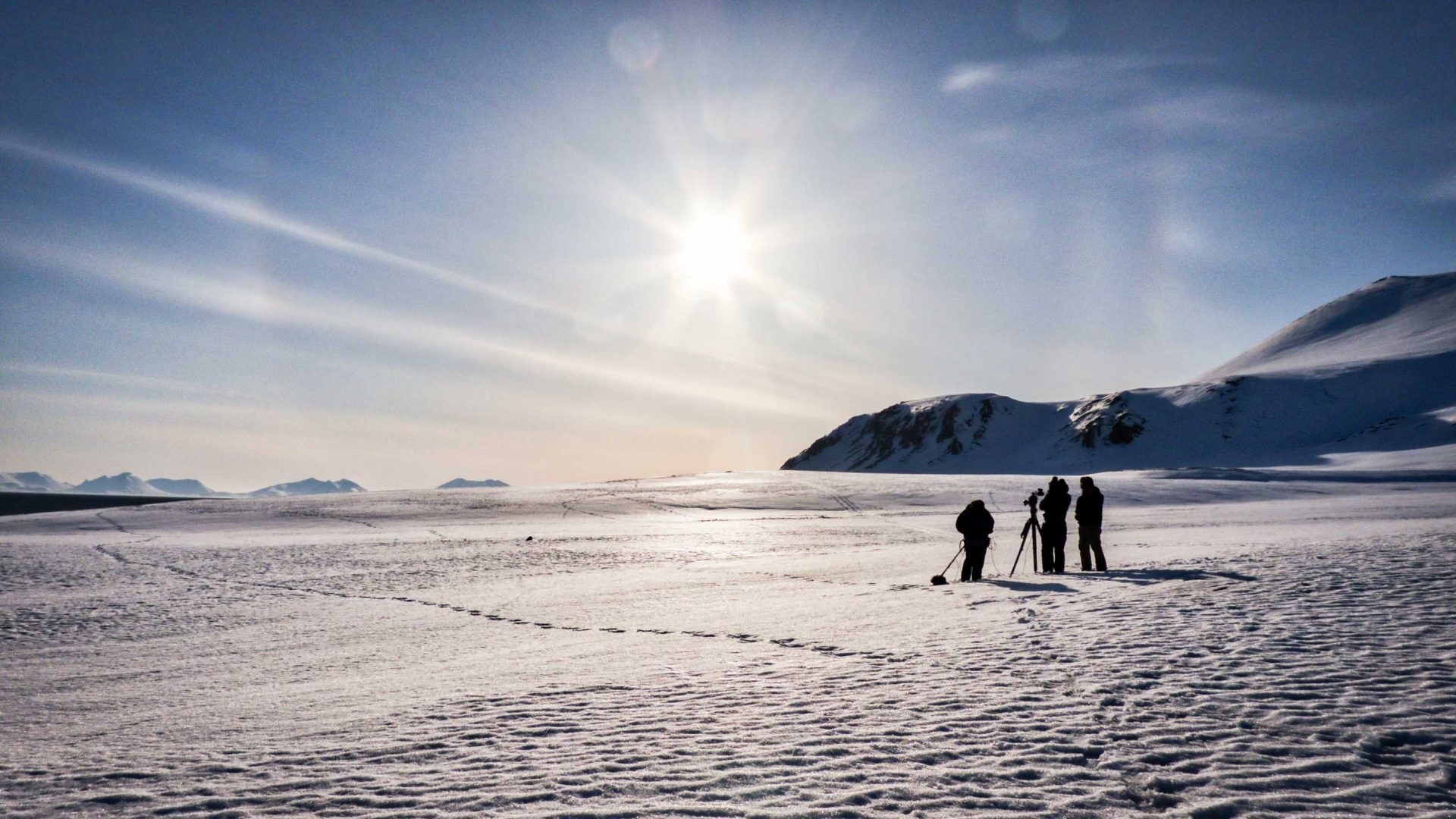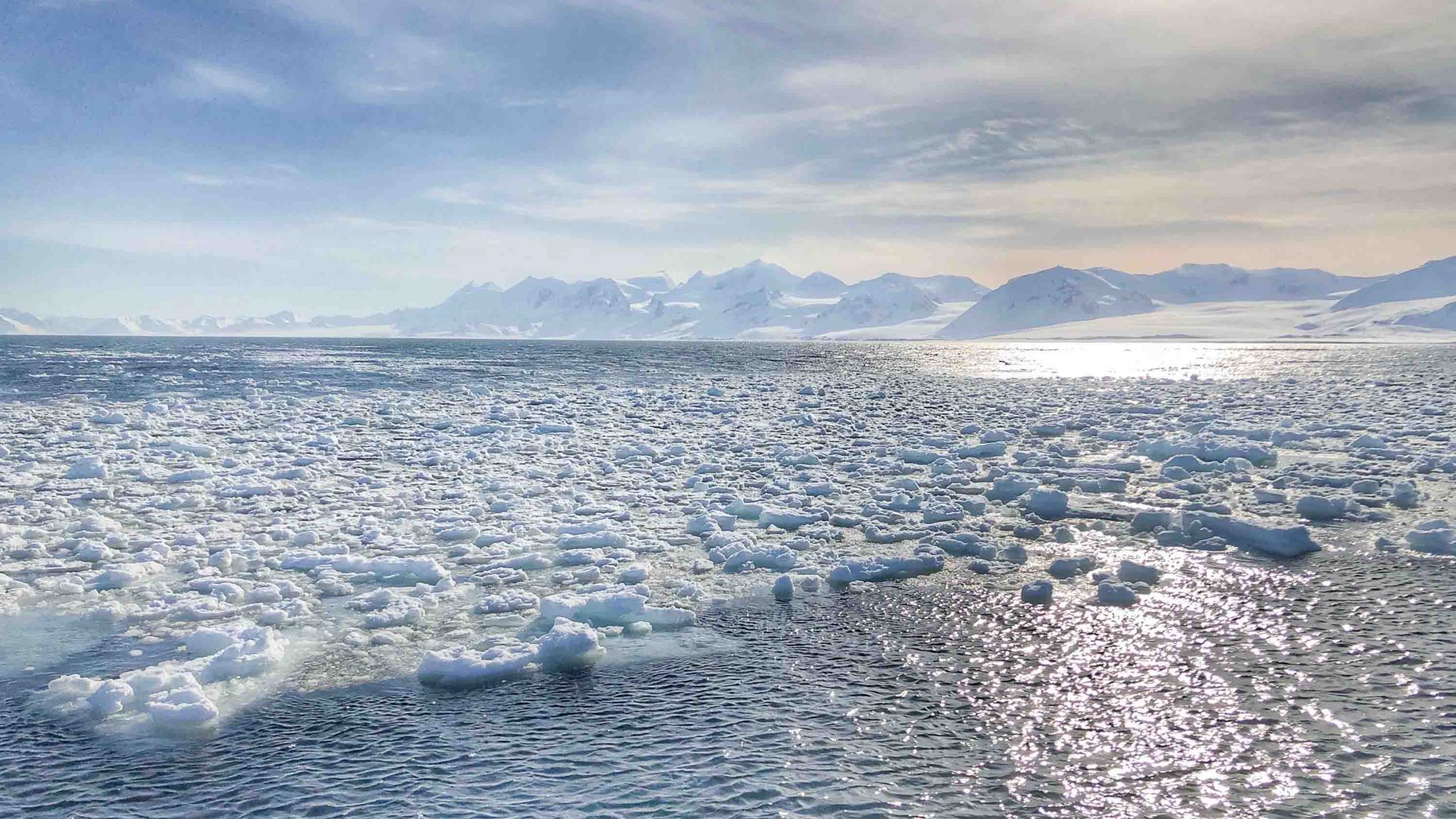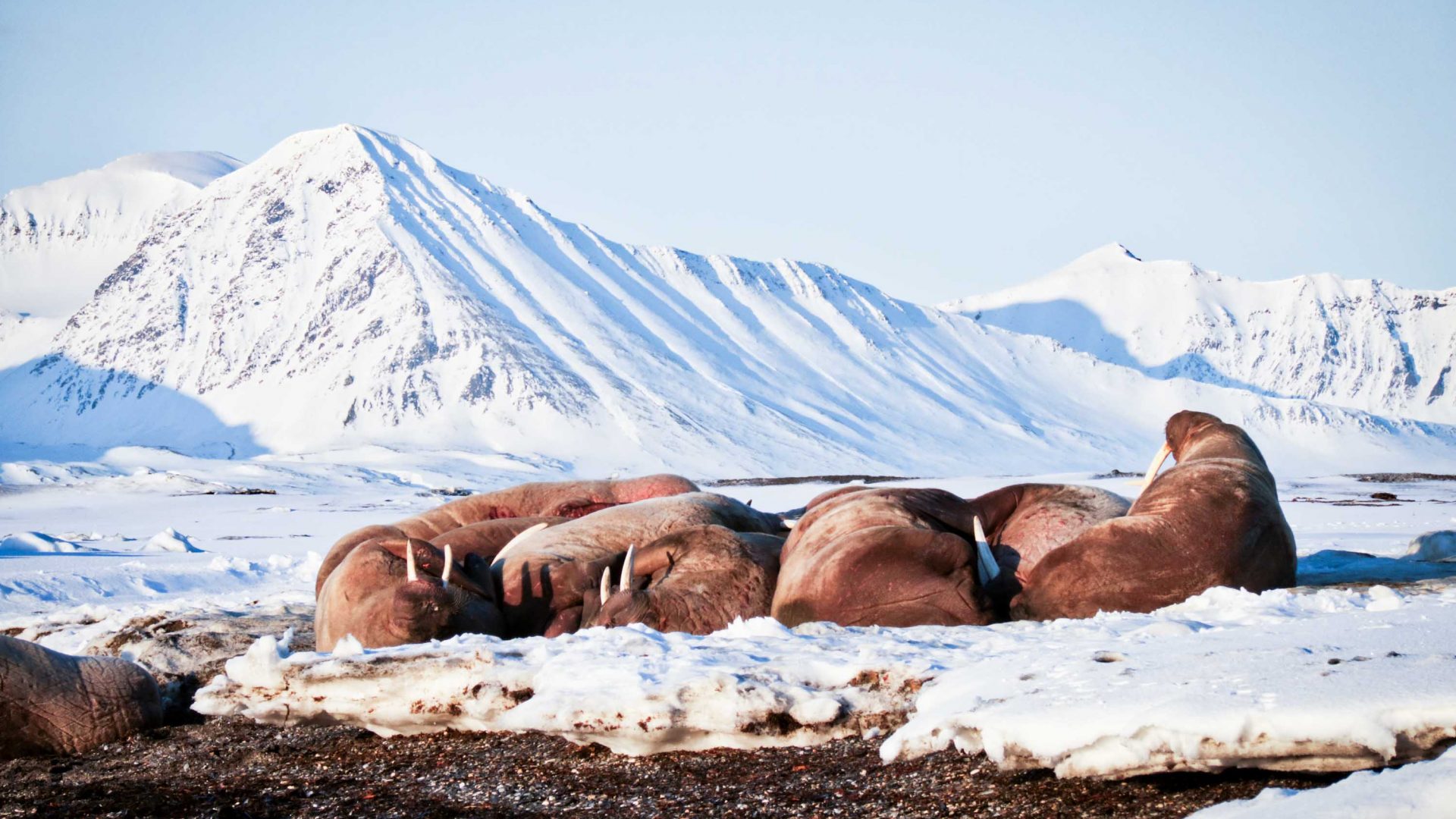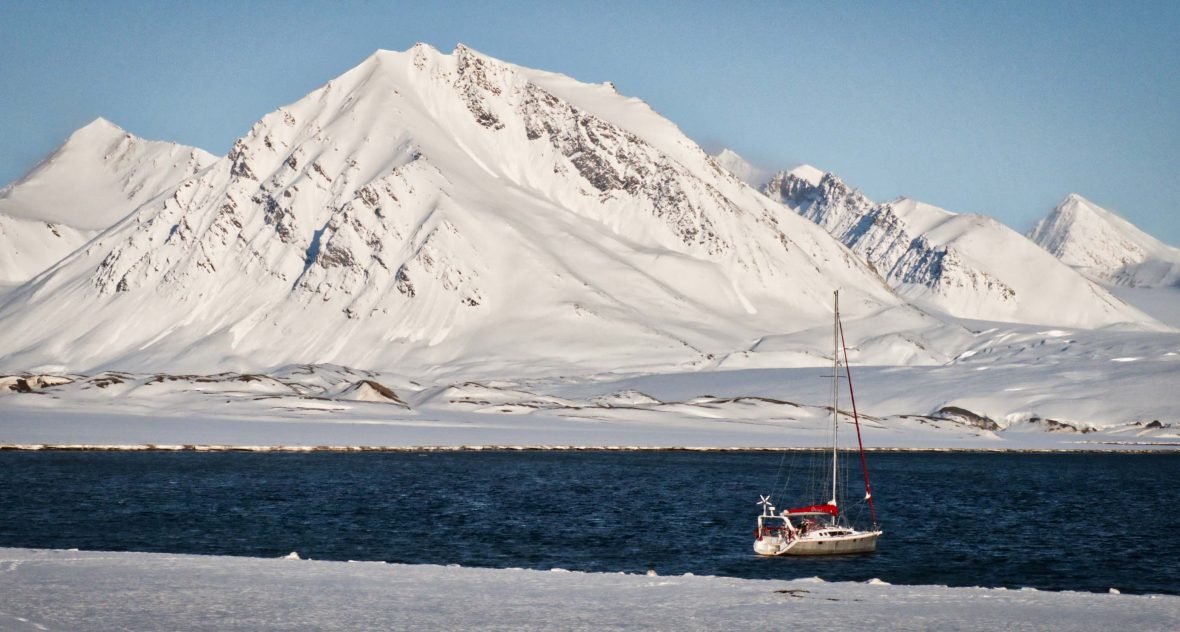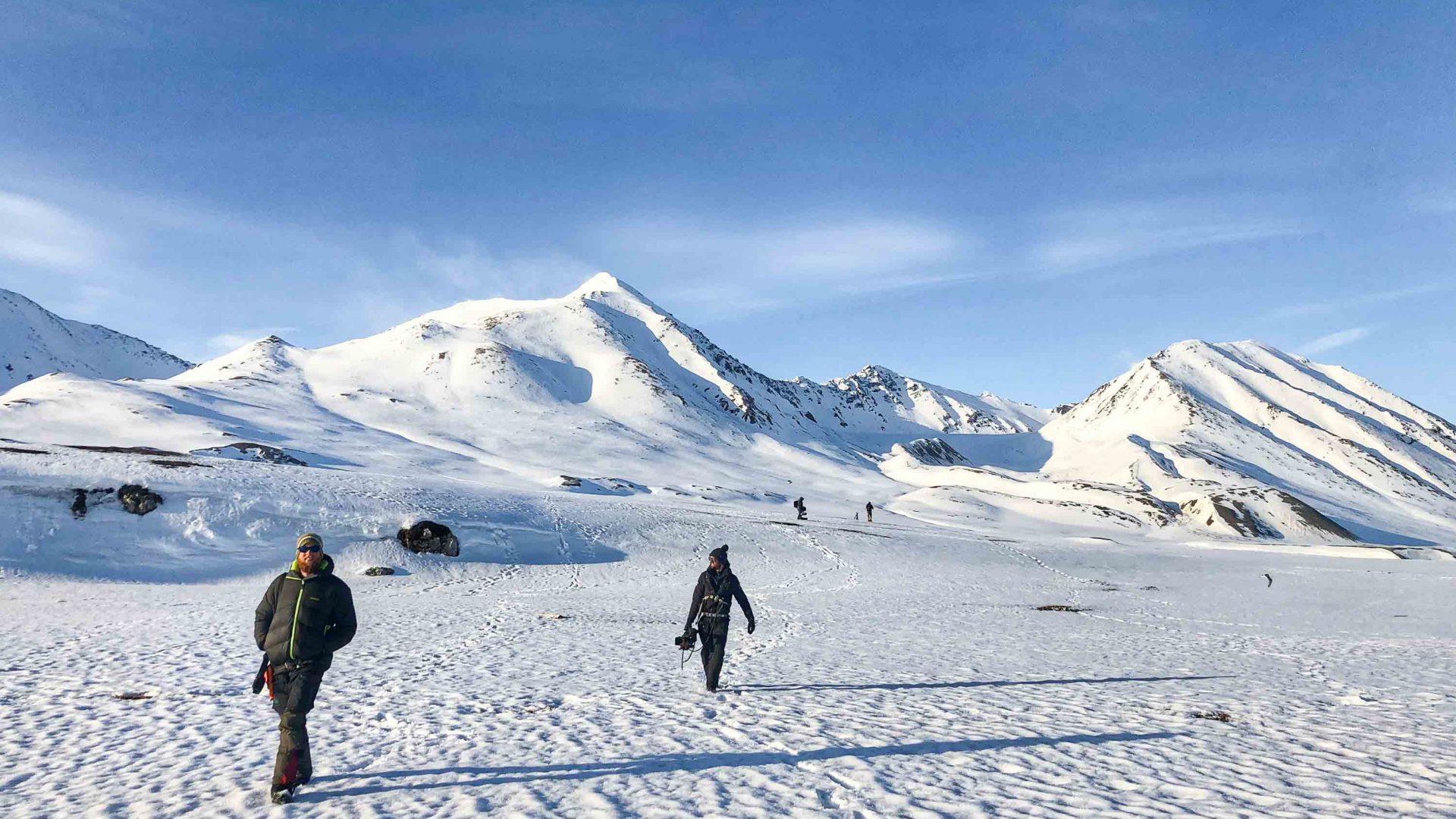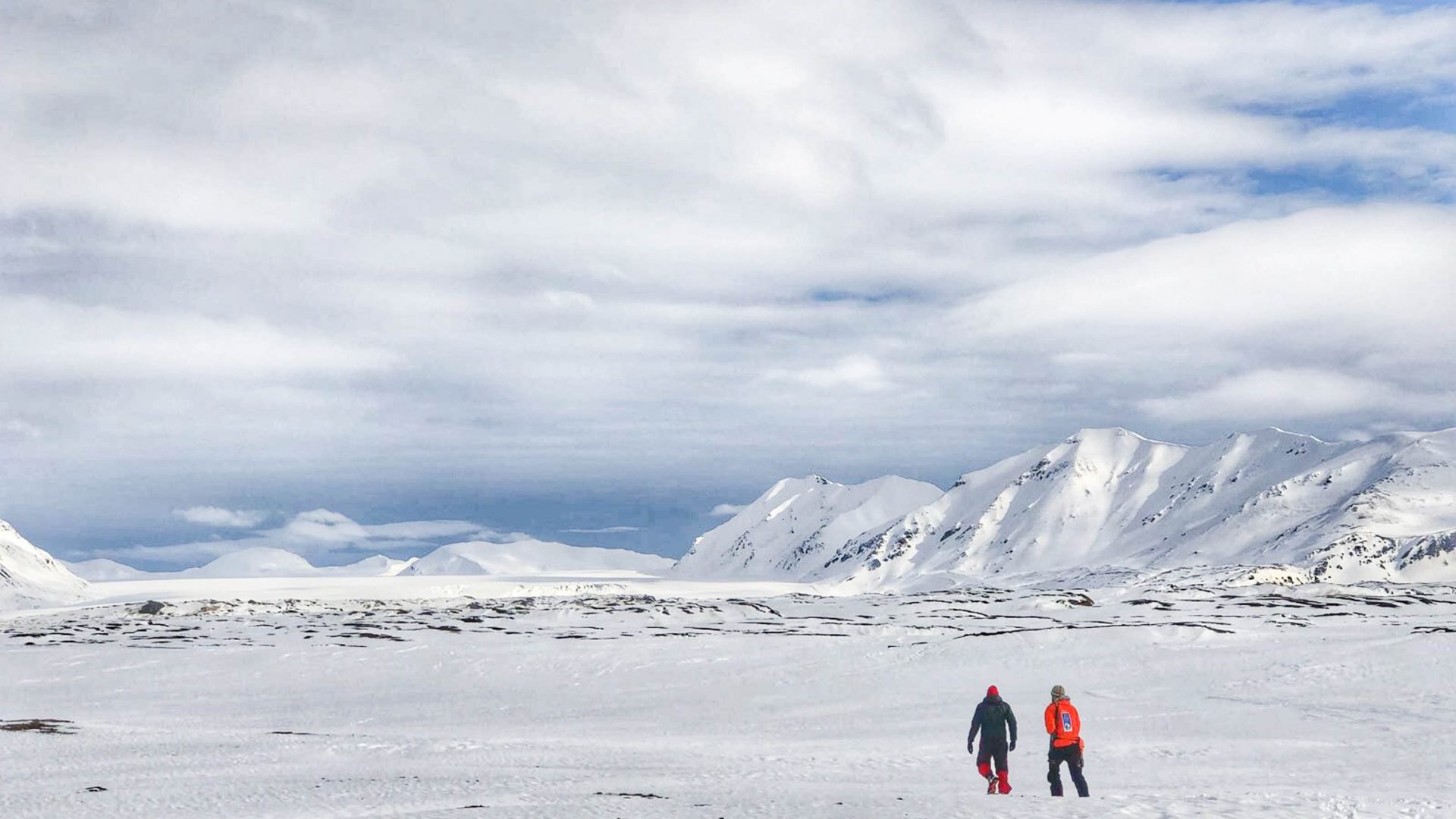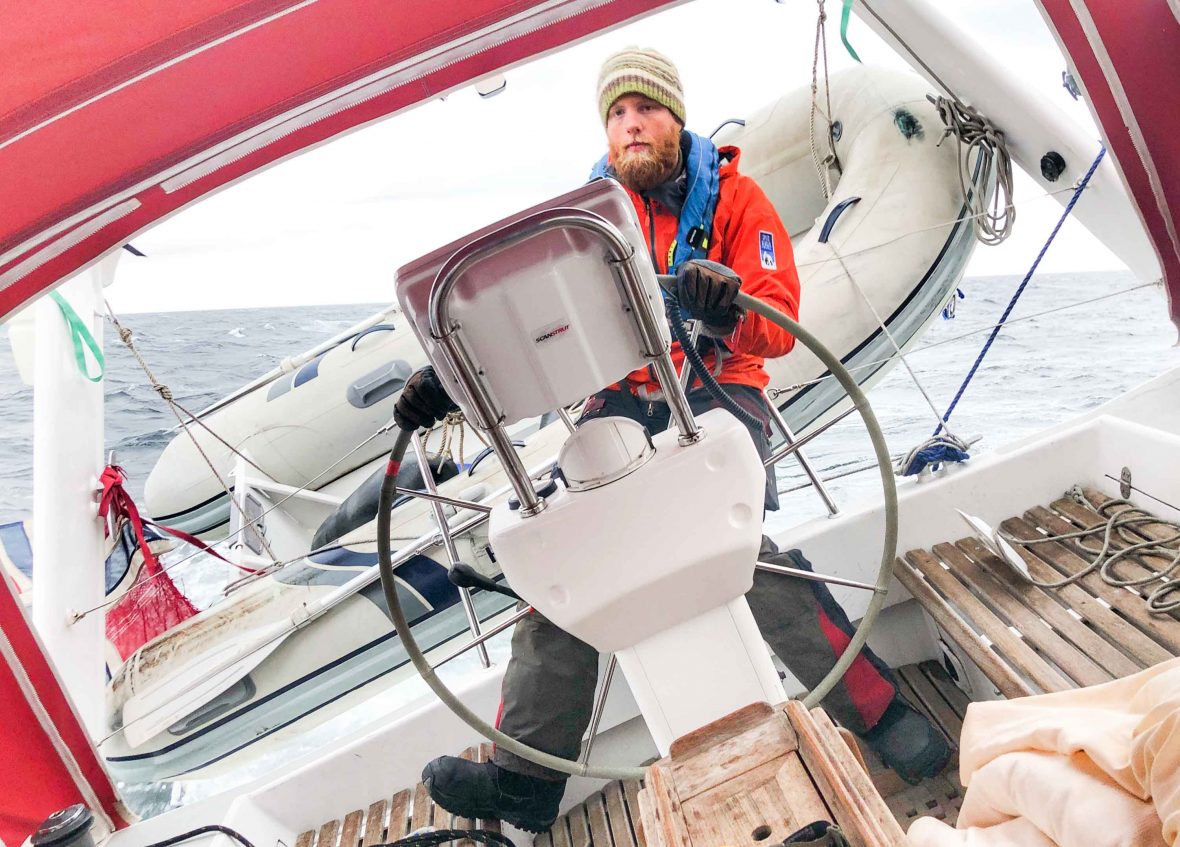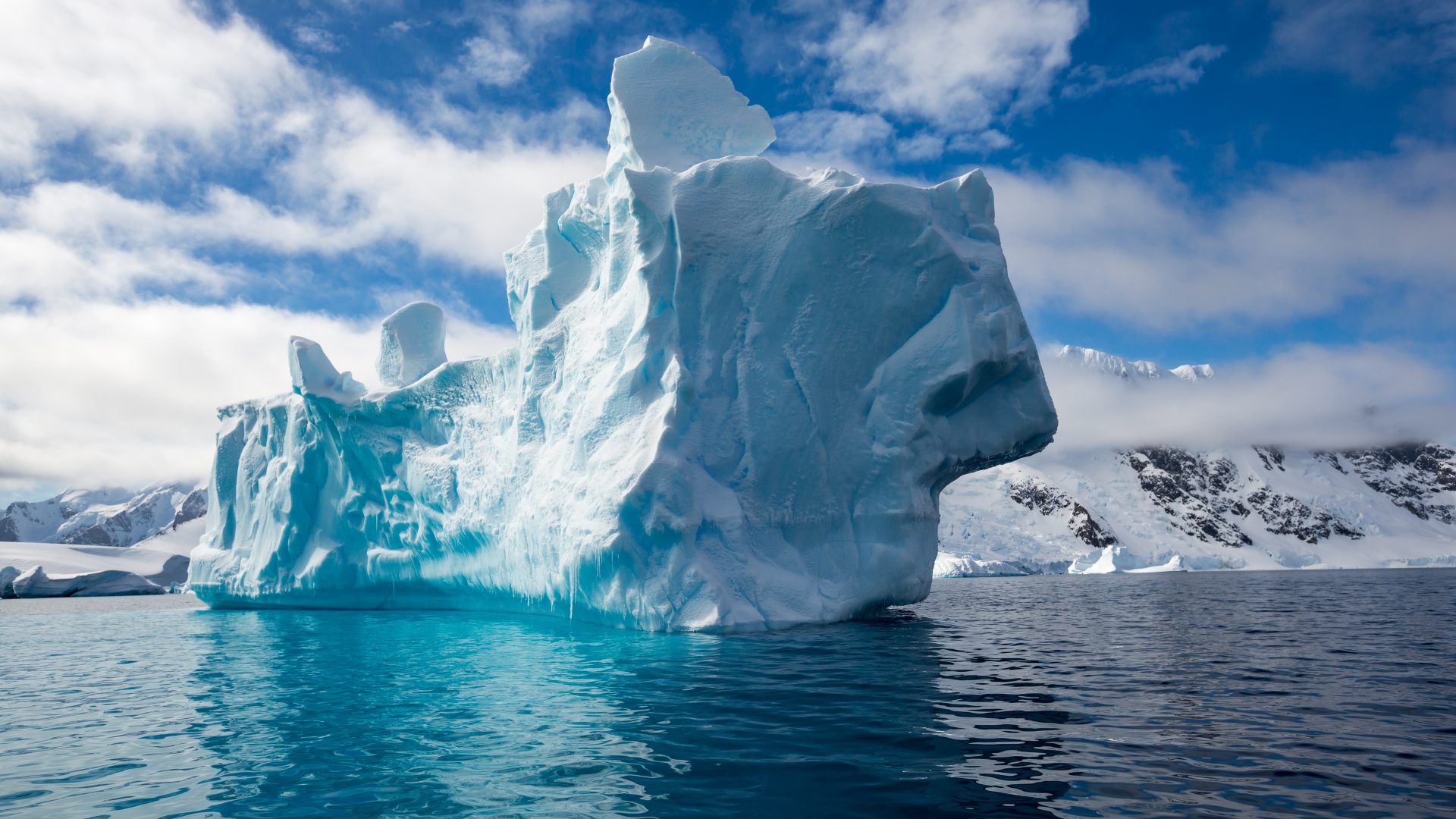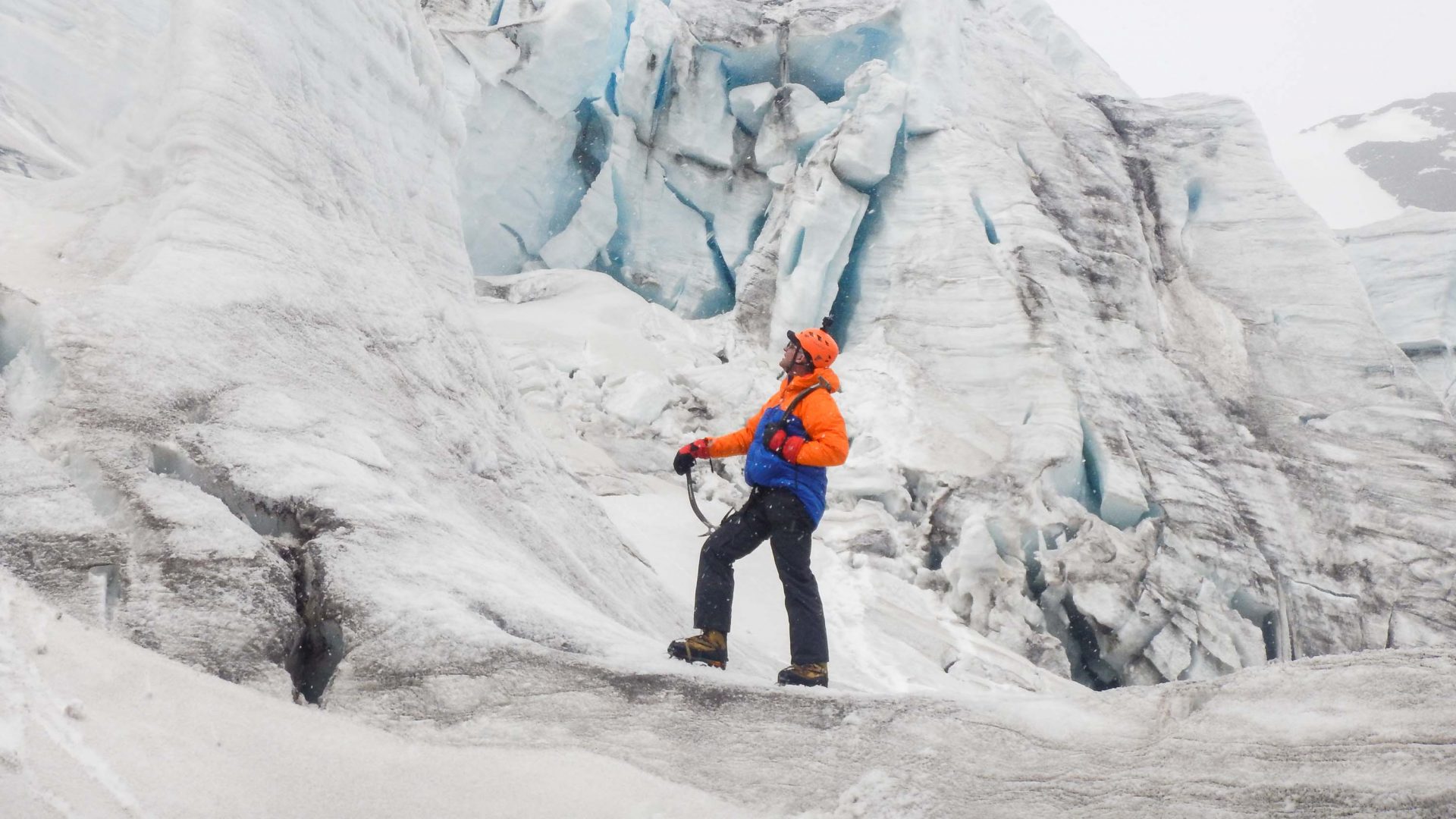Why do explorers still take risks to reach the Poles, even when most ‘firsts’ have been claimed and records broken? Avid Pole-seeker and featured contributor Leon McCarron explains.
When I was 10, I wanted to go to the South Pole. When I was 15, I decided that I’d like to go to the North Pole too. As yet, I haven’t done either. It’s taken me 31 years to even make it to the Arctic. While it’s not quite to the top of the planet, this year, I journey further north than ever before.
From Longyearbyen, the main town on the biggest island of the Svalbard archipelago, I step onto a boat and sail west out of the ice fjord towards open water, then north through a channel with Spitsbergen island on one side and Prince Charles Foreland on the other.
I’m traveling with a film crew from Northern Ireland, and we’re here to follow in the footsteps of Lord Dufferin who, in the 1850s, had sailed from Scotland to Svalbard. He was an early adventure tourist rather than an explorer, but his journey was nevertheless one of guts and gall and sheer bloody-mindedness; and indeed, one driven by the desire to see the great empty wildernesses that lie at the ends of the world.
Icebergs the size of buses float past our small sailboat as we roar north with the wind. We spent nights anchored in the shelter of small, jutting peninsulas, and wander on shore in the midnight sun to admire—from a safe distance—the writhing, tusked forms within a huddle of walruses (and yes, that is the correct collective noun).
RELATED: The race to be last: Polar explorer Eric Larsen battles climate change
Finally, we reach the point we’d been aiming for—English Bay, where Dufferin made landfall—and step off onto the horseshoe-shaped beach. There are very few other humans for hundreds of miles; perhaps just a handful of scientists and trappers. Any that are there are certainly outnumbered by polar bears.
Beyond the hills that enclose us, we catch glimpses into huge, cavernous valleys beyond, stretching out to the white horizon punctuated only by the crisp, reflective glow of glaciers. This is what I’d dreamt of; the privilege of standing somewhere so pristine.
Today too, tragedy still strikes; most recently, the heart-breaking story of Henry Worsley’s death during his attempt to become the first person to cross Antarctica solo and unaided. So why do explorers still put themselves at such risk, when surely all firsts have been claimed and records broken?
Much of it seems to lie in the simple purity of the challenge. Scott talked of the appeal of a place that had “hitherto been untrodden by human feet, unseen by human eyes.” Even today, polar regions can still feel as though they’re untouched by the human hand. As a more general description, however, perhaps it is, as the Norwegian explorer Fridtjof Nansen describes, a visceral, internal trial. He asks the rhetorical question:
“Why [do we do it]? On account of the great geographical discoveries, the important scientific results? Oh no; that will come later, for the few specialists. This is something all can understand. A victory of human mind and human strength over the dominion and powers of Nature; a deed that lifts us above the great monotony of daily life; a view over shining plains, with lofty mountains against the cold blue sky, and lands covered by ice-sheets of inconceivable extent … the triumph of the living over the stiffened realm of death.”
On my journey to the Arctic, we share none of the trials nor tribulations of the great explorers, and yet on the homeward journey the weather turns and we’re left for a few days at the mercy of a storm. Our boat bounces around on ‘old sea,’ as the skipper calls it—water still shaking from previous tumultuous weather—and we experience just a small taste of that helplessness when faced with the raw power of the far north.
The hero of my youth, Ernest Shackleton, took it upon himself to outline the skills a polar explorer must have, and perhaps that’s as good an answer to the question as any. The first, he says, is a requirement of bring an optimist. Second: “patience; third, physical endurance; fourth, idealism; fifth and last, courage.”
He, and those mentioned above had these traits in spades, as did (and do) so many others. We should be grateful for their spirit and stories. I know I am.
